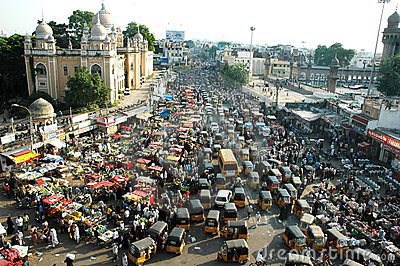The Road to Safer Roads: India's Traffic-Jam

India is a country whose vigorous nature can be seen in all parts of its society; from the burning heat of its hot weather, the ardent flavors of its spicy foods, and even the energy in its exciting Bollywood dances, India displays an energetic, ‘hustle-bustle’ atmosphere. Unfortunately, getting caught up in all this energy often means overlooking safety measures—an event that especially occurs in the case of India’s roads.
According to the World Health Organization, hazardous traffic-related incidents result in over 231,000 deaths annually, making India a country with the one of the worst traffic accident rates worldwide.
Automobile drivers, bicyclists, and pedestrians are just a few among the thousands who are vulnerable to the precarious nature of Indian transportation. In most cases, the roads are not only constructed poorly, but they also display a lack of basic transportation-related equipment (such as traffic lights and STOP signs). Throw in the fact that most cities are already overpopulated, add a couple of rickshaw-related accidents, and remember to factor in the cows that casually walk alongside the traffic (as if the roads aren’t crowded enough already), and voilà–you have a recipe for disaster.
So what’s being done about it?
As elections start in India, BJP candidate Narendra Modi continues to actively advocate for transportation infrastructure development, an issue with a prominent place on his platform.
Modi has indicated there are five major parts of the transportation sector that he plans to focus on—Railway, Public Transport, Next-generation Infrastructure, Freight, and Airports & Ports—and he and his fellow BJP members are determined to ensure these improvements be made in both urban and rural areas in India.
Luckily, other measures have already started being taken.
Underwriters Laboratories and Ashoka Changemakers, two international non-profit organizations, have organized a contest called ‘Safter Roads, Safer India’, designed to encourage citizens in creating new, innovative ideas that solve the drastic impacts of poor transportation infrastructure. Each category—active citizenship, technology, policy and governance, and smart urban design—will have a different winner. When trying to combat an issue as pervasive and pernicious as public transportation, it can often be difficult to design a solution. That may be why R A Venkitachalam and Vishnu Swaminathan, collaborators behind this initiative, agree that India needs to collaborate with multiple different sectors and incorporate the general public in order to adequately innovate new potential solutions.
Furthermore, the World Health Organization itself is part of the ‘Bloomberg Philanthropies Global Road Safety Programme,’ a global project created to reduce hazardous transportation systems and to develop safer infrastructure development in India and other developing countries, such as Kenya, Mexico, and Cambodia.
What both of these organizations have in common is that they strive to find a solution for the devastating issue of road-traffic accidents– a solution that connects NGO’s, businesses, and active citizens, thus uniting the community as a whole while working towards the common goal of saving lives, one road at a time.
India is a major global power and continues to display its energy in various fields—but although it proudly demonstrates success through its culinary prominence and its Bollywood culture, India’s current first-place seat regarding the number of traffic-related deaths is not an accomplishment we should be proud of.




